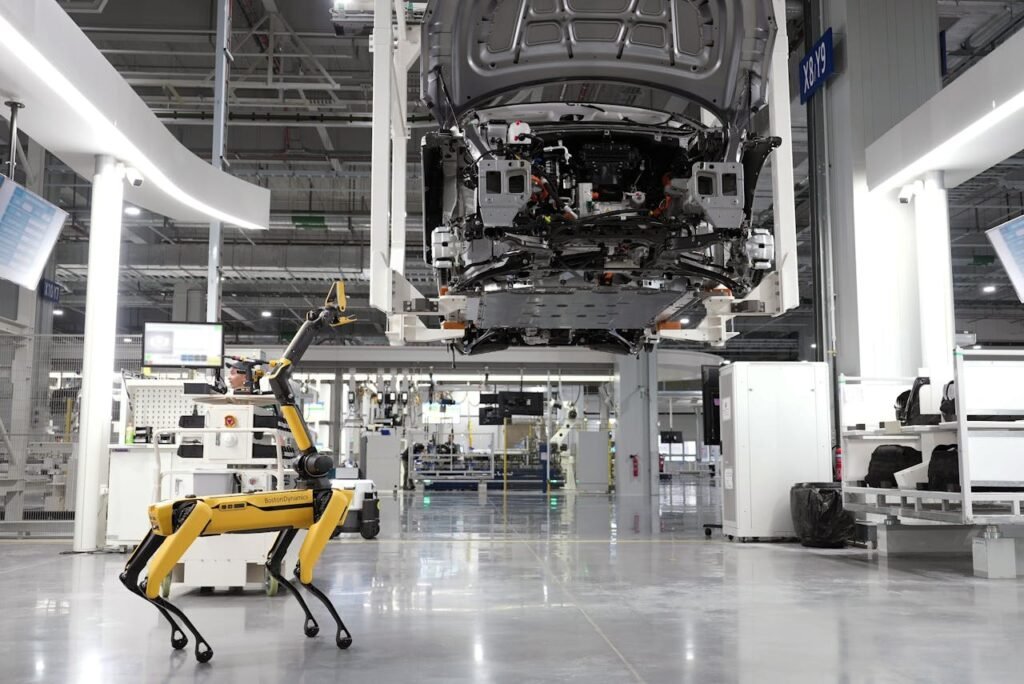Managing today’s large-scale industrial operations efficiently and safely is a significant challenge. Industries across various sectors, including manufacturing, energy, and utilities, depend on systems that provide real-time monitoring and control.
This is where Supervisory Control and Data Acquisition (SCADA) systems play a vital role. These systems enable industries to monitor and control operations remotely, improving efficiency and safety. Let’s go through the operation of SCADA systems, their components, and how they shape the future of industrial operations.
Photo by Hyundai Motor Group :
Understanding SCADA Systems and Their Functionality
A SCADA system is an industrial control system that collects real-time data from remote locations and enables operators to control equipment from a central point. These systems are crucial for monitoring and managing large-scale operations, such as power plants, water treatment facilities, and manufacturing processes. By providing real-time insights, SCADA enables industries to maintain efficient and safe operations.
The system works by gathering data through sensors, which are connected to Remote Terminal Units (RTUs). These RTUs transmit the data to the central SCADA system, where it is processed and analyzed. Operators can monitor system performance through Human-machine Interfaces (HMIs), which display critical information and facilitate quick decision-making.
If necessary, the system enables operators to send commands to machinery, allowing for adjustments to address any issues. This combination of data collection, processing, and control enables industries to manage their operations remotely, ensuring efficiency and reliability.
Key Components of a SCADA System
A SCADA system consists of several crucial components that work together to ensure smooth operation:
- Sensors and RTUs: These data acquisition devices collect and transmit real-time data from the field to the central system.
- Controllers: Process and analyze the collected data.
- Human-machine Interfaces: Provide a user-friendly interface for monitoring and controlling processes.
- Communication Infrastructure: Ensures the smooth transmission of data across systems, facilitating real-time data acquisition.
Together, these components enable SCADA systems to provide accurate, real-time information that is essential for making informed decisions and maintaining operational efficiency.
Benefits of SCADA Systems in Industry
SCADA systems offer multiple advantages to industries, primarily in improving efficiency and ensuring safety.
- Increased Operational Efficiency
By automating control and providing real-time insights, SCADA systems reduce the need for manual intervention and optimize resource allocation.
- Real-time Monitoring and Alerts
SCADA systems allow operators to receive immediate alerts for abnormal conditions, reducing downtime and preventing potential failures.
- Cost Reduction
With automated systems and predictive maintenance capabilities, SCADA helps companies lower energy consumption, reduce maintenance costs, and minimize downtime.
These benefits contribute significantly to the overall success of an industrial operation, driving both profitability and sustainability.
The Future of SCADA: Integration with Smart Technologies
The future of SCADA is heavily influenced by technological advancements, including the Internet of Things (IoT), Artificial Intelligence (AI), and cloud computing.
- IoT Integration
With IoT growth, SCADA systems will collect data from more edge devices and sensor networks, boosting connectivity and real-time data acquisition across decentralized systems.
- AI and Predictive Analytics
SCADA systems will increasingly utilise AI to predict equipment failures, enabling preventive measures and enhancing overall system reliability.
- Cloud-based SCADA
Cloud technologies will enable industries to access SCADA data remotely, enhancing scalability and flexibility while reducing the need for on-premises infrastructure.
The integration of these technologies will make SCADA systems smarter, more adaptable, and capable of handling increasingly complex industrial operations.
SCADA as the Backbone of Industrial Control
SCADA systems are critical for modern industrial operations, offering real-time monitoring, control, and decision-making capabilities. From increasing efficiency to ensuring safety, SCADA systems are a vital tool for industries seeking to remain competitive and sustainable. With the future of SCADA closely tied to innovations in IoT, AI, and cloud computing, industries are poised to unlock new levels of operational excellence and reliability.
By partnering with a reputable energy provider, businesses gain expert guidance and dependable support, ensuring that SCADA investments deliver consistent performance. This approach strengthens both daily operations and long-term strategic goals.







